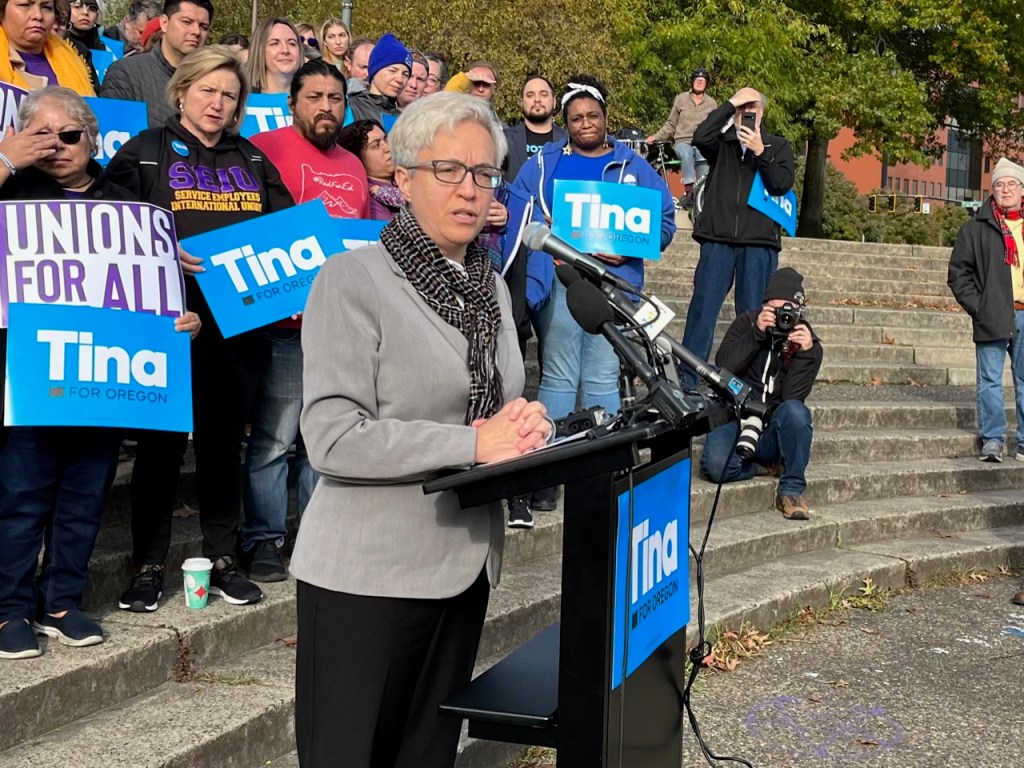As Oregon’s Legislature gets set to return, Gov.-elect Tina Kotek steps up to the plate
Published 2:57 pm Wednesday, December 28, 2022

- Tina Kotek speaks at a post-election event on Thursday, Nov. 10 in Portland.
From her first public appearance as governor-elect on Nov. 10 to her first official remarks at the Oregon Business Plan summit Dec. 12, Gov.-elect Tina Kotek has been consistent about her top priorities in her first year:
Housing and homelessness.
Mental health and substance abuse treatment.
Public schools, particularly a focus on lagging reading scores.
But much rests on the two-year state budget she will propose for the cycle. State economists have forecast a “mild” downturn in fall 2023 that may result in $3 billion less in tax collections and lottery proceeds in the next budget cycle, which begins July 1, than in the current cycle.
She also had to deal with competing plans for homelessness money; one offered by Portland Mayor Ted Wheeler, and another offered by mayors from cities across the state.
Kotek hasn’t offered details about her own plans, which are subject to legislative approval.
The Legislature has two more revenue forecasts in mid-February and mid-May before it crafts a final budget for the coming two-year cycle.
Among Gov.-elect Tina Kotek’s three priorities is a plan to being constructing housing units in Oregon. The state has a vast undersupply of housing, which exacerbates everything from homelessness to the cost of living.
Housing
Legislators also expect to take on the question of housing supply. According to one estimate, Oregon has a shortage of 111,000 housing units from the past decade — half needed by people below the area median income — and the number of housing units being built isn’t even keeping pace with current population growth. Two state agencies are expected to unveil a study soon.
Kotek has said her plan will involve a “land use component,” but will not do away with the urban growth boundaries that separate development from farm and forest land — the basic principle behind Oregon’s 50-year-old land use planning program.
Kotek said that just as important as new money is a focus on how quickly money goes to government agencies and community providers so they can provide services.
Kotek plans during her first year in office to visit each of Oregon’s 36 counties and listen to what communities have to say.
“I will work to bridge the divisions in our state,” Kotek said in November. “I will spend time in our communities all over Oregon, working to fix problems and partner with Oregonians who want to find solutions.”
Construction and COVID
All of this will take place against a backdrop of major construction at the Capitol in Salem. In the past couple of years, the Capitol has been nearly deserted because of restrictions stemming from the COVID-19 pandemic. Those restrictions have been lifted, but the main, 1938 Capitol is closed due to seismic reinforcement. The House and Senate office wings reopened on Dec. 5. Legislators will still use their offices, and hearing rooms will be available to the public, but it is anticipated that much of business of the 2023 Legislature will take place via video conference.
The House will be able to use its chambers in the main Capitol building; it is not quite as certain for the Senate. Given their smaller number — 30 senators, 60 House members — the Senate could use hearing rooms as chambers, as it did in 1993 an earthquake damaged the Capitol. But the Senate met only in meeting rooms for a short period of time that year.





